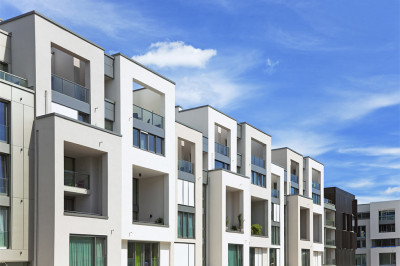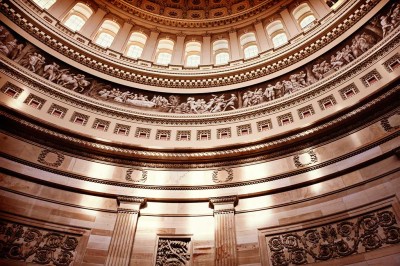The flow of Asian capital into U.S. markets has been nothing short of phenomenal. This is certainly part of a larger trend we’re seeing overall regarding foreign direct investment in the United States. In particular, it’s Chinese investors who are generating the most attention because of the size and velocity of capital invested in prominent markets such as New York, Los Angeles and San Francisco. In January and February 2015 alone, Chinese purchases of U.S. real estate amounted to $2.25 billion.
Plus: Five foreign capital trends in the U.S. CRE market | No time to panic in the U.S.
And with recent confirmation of China’s slowing economy, scrutiny over the increased flood of Chinese capital into major U.S. markets has never been more acute. At least that’s what current headlines suggest. But what we’re seeing isn’t a “run for the exits” strategy on the part of concerned, incredibly motivated Asian investors. It’s really a diversification strategy that bears a closer look, especially since what we’re seeing now is likely to continue for the rest of 2015.
Headwinds in China
The forecasts we’ve been reading for some months have proved true: The Chinese economy is slowing down, growing in the first quarter of 2015 at its slowest pace in six years and with forecasted annual GDP down to 7 percent from 7.3 percent from the last quarter of 2014. Some investment banks are suggesting that we could move to 6 percent more quickly than forecasted.
Also: Is foreign capital overheating the US property market? | Will the rise of megacities be our finest hour?
And pundits across borders think there could be potentially more systemic weakness behind the numbers we’re seeing. In particular, in a nation where real estate has played a central role (about 23%) in economic growth since the Great Financial Crisis in 2008, the property market has continued to be a drag. One need only look at the boom of so-called “ghost cities,” where construction has far outpaced the general population’s ability to absorb real estate. As a result, China finds itself with massive residential complexes that are not occupied, though they have sold – not as a place to live but as speculative investments for an emerging middle class. The supply of unfinished real estate in China has boomed. For 2014, based upon current market values, unfinished projects account for 75 percent of China’s GDP. By comparison, all of the real estate – both residential and commercial, finished and unfinished – in the U.S. comprises somewhere between 10 and 15 percent of U.S. GDP.
Then there is the issue of China’s currency, which is pegged to the U.S. dollar. At a time when China’s economy is slowing, the Yuan has continued to appreciate significantly, further exacerbating economic challenges and putting more downward pressure on China’s GDP growth objectives. Additionally, the escalation of the U.S. dollar has hurt China in relation to other global currencies, particularly the Euro (20 percent appreciation) and the Yen (50 percent appreciation); this makes Chinese goods less competitive in the global markets.
Finally, there is emerging concern over the unprecedented gains in China’s major stock markets and the amount of leverage that mainstream Chinese have taken on in the form of margin accounts. For example, the Shanghai Composite has risen over 100 percent in the last 12 months while the amount of margin debt during that same period has risen over 300 percent. At a time when the U.S. has generally been deleveraging, the Chinese have been falling in love with leverage. The Chinese government is trying to slow the amount of margin debt being used by the average investor, but the cat may already be out of the bag. Restrictions on the use of debt will put further downward pressure on China’s GDP.
Tailwinds (relative) in the United States
The U.K. real estate market has traditionally been a favorite for Asian capital because of the potential for high yields along with a transparent, favorable tax regime. But the U.S. is catching up quickly. More recent economic factors are making U.S. commercial real estate a desirable, safe investment when compared to the other alternatives globally. Whereas Chinese growth is slowing, U.S. GDP growth remains steady, in the 2.25 to 2.75 percent range annualized. Job growth, too, has been generally solid with the exception of a near term blip this last quarter likely due to weather in the Eastern U.S.
Job growth, however, is only one side of the coin. The other is wage growth, which has progressed more slowly than inflation. The fact that inflation is outpacing the overall growth in wages is significant as it’s a major contributor to the reason we’ll see continued low rates in the U.S. for this next year. Other major factors at play include a strengthening dollar and lower oil prices — not to mention contagion risk from the rest of the world’s economies that are on less solid footing. What that means is that interest rate increases – if there are any – will be slow and cautious.
The impact on and case for U.S. commercial real estate
Overall improvement of the U.S. economy is one of the contributing factors to the growth of Chinese capital investment in the United States, in addition to the relative transparency of the U.S.’s political and monetary policies compared with other alternatives. But really, what we’re seeing is a global search for yield at a time where there is too much capital chasing few investment opportunities; this is the case for all asset classes, including real estate, stocks and bonds. This global search for yield and the movement of capital internationally are a generational change that is not likely to vanish, even in the face of future market corrections.
More importantly, the Asian investor profile is changing, as well: 12 months ago, it was all about New York and San Francisco with capital being more yield-motivated and being willing to take on more risk. That trend feels like it’s shifting to being more cautious, with a longer-term investment horizon that is focused on capital preservation. At the same time, we are seeing foreign capital starting to look at other markets like Boston, Seattle, Chicago, Denver and Houston as capital searches for yield in relation to other alternatives it can deploy to.
Certainly U.S. commercial real estate is no investment nirvana; there are challenges. But in a fully priced market, and given the basket of global alternatives, U.S. CRE presents a great long-term solution. As a result, expect Chinese investment in the U.S. to continue to rise in 2015. While office assets have always been a favorite, pay particularly close attention to multifamily real-estate options, a sector which can be expected to maintain popularity with Asian investors, and industrial properties, which with stable risk and return metrics may very well be a growth area to watch.

 Colliers Insights Team
Colliers Insights Team

 Will Mathews
Will Mathews